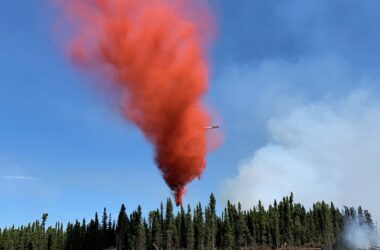The U.S. Environmental Protection Agency announced that Alaska’s water quality standards need to be updated to more accurately reflect the amount of fish Alaskans consume.
This action requires Alaska to revise its limits on toxic pollutants in its waters to ensure that eating fish supports healthy people and communities. EPA’s determination sets the agency on a path to issuing a federal backstop in the event that Alaska does not strengthen the state’s water quality standards to protect residents.
“EPA continues to engage closely with the state of Alaska to ensure its communities, many of which rely on fish and shellfish for subsistence, are safer from pollution,” said EPA Acting Assistant Administrator for Water Bruno Pigott. “Alaskans eat more salmon, other fish, and shellfish than the average American. That’s why it’s important to update the science and analyses that underpin federal and state standards that protect water quality and ensure that it’s safe to eat fish.”
This determination stems from long-standing concerns that the fish consumption rate used in Alaska’s existing human health criteria does not reflect the fish consumption patterns of Alaska residents, including rural and Tribal consumers.
Alaska’s existing water quality standards, last updated in 2003, are based on the national default fish consumption rate at that time of approximately seven ounces per month. Data from several sources indicate that actual fish consumption rates for Alaska residents, including Alaska Native and rural subsistence consumers, likely range from 7 to 14 ounces per day.
If the state does not submit revised water quality standards, EPA plans to propose new and revised standards for Alaska that will take this updated data into account and protect those who eat salmon and other fish and shellfish from the state’s waters. EPA will seek input from the public on the proposed rule and will consider all comments received before proceeding to the final rule stage.
Water quality standards define a waterbody’s goals and provide a regulatory basis for many actions under the Clean Water Act, including reporting on water quality conditions and status, developing water quality-based effluent limits in discharge permits for point sources, and setting pollution targets for a state’s water bodies.






